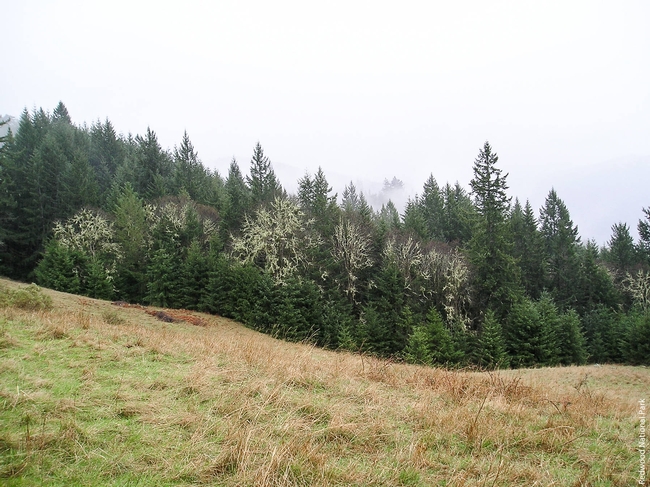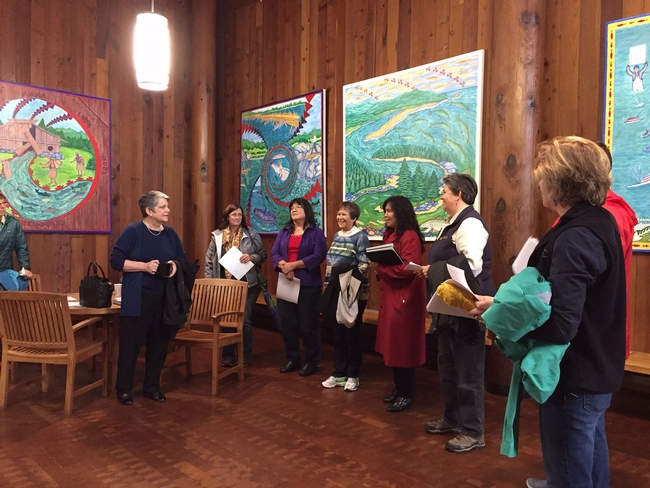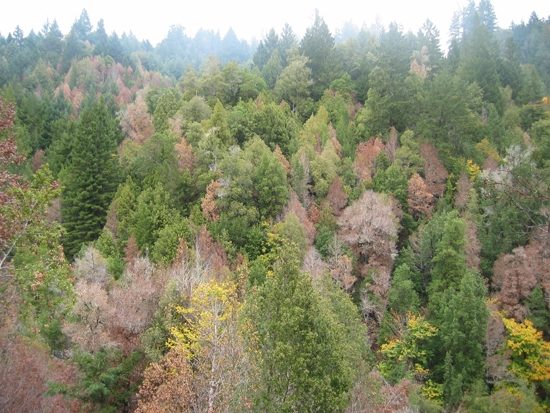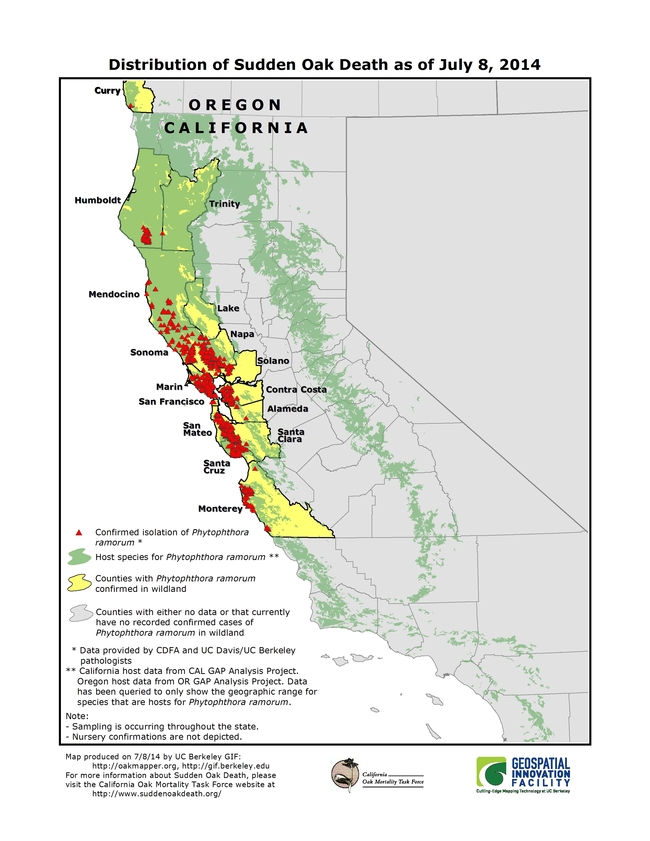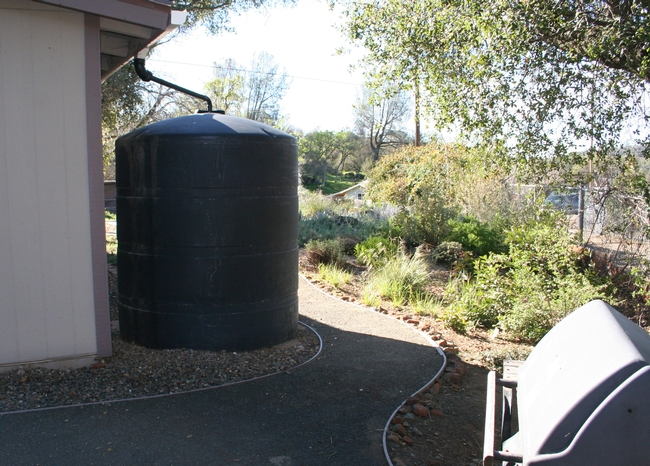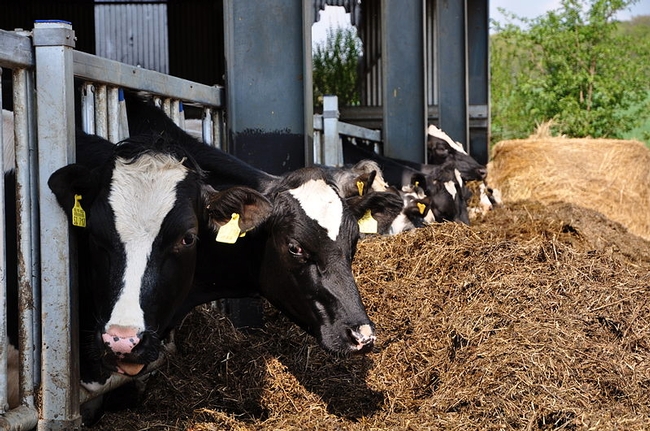Posts Tagged: Yana Valachovic
California Assembly approved bill to protect oak woodlands
The California State Assembly passed a bill unanimously that would provide new resources to landowners to halt the encroachment of conifers on oak woodland, reported Hunter Cresswell in the Times-Standard. The bill (AB 1958) must be approved by the State Senate and Gov. Brown before it becomes law.
Oak woodlands are "some of the most biodiverse ecosystems in the North West," said UC Cooperative Extension forest advisor Yana Valochovic. "They are preferentially used by a lot of different bird species."
In the past, fires would burn out conifers and underbrush on oak woodland annually, but aggressive fire suppression is enabling them to spread unchecked, crowding out oaks.
Yanachovic is finishing a three-year research project on conifer encroachment, and AB 1958, if passed, would put policies in place so people can get rid of the conifers without jumping through as many bureaucratic hoops as before, the article said.
“It clarifies that the cutting of younger conifers out of oak woodlands does not qualify as conversion of timberlands,” she said.
UC president Janet Napolitano and UC ANR vice president Glenda Humiston tour Humboldt
Janet Napolitano, who is on a two-day tour in Humboldt County, is the first UC president to visit the Northern California locale, reported Marc Vartabedian in the Eureka Times-Standard. Napolitano is joined by Glenda Humiston, vice president of UC Agriculture and Natural Resources.
Napolitano and Humiston are visiting an Indian health services facility, a seafood company, a forest and a high school. UC has had a long presence in Humboldt County. Humboldt was the site of the first UC Cooperative Extension office in California, established in 1913.
“UC has had 100 years of research presence in the Arcata forest and many of their campuses are world leaders in ecological research,” said Yana Valachovic, director of UC Cooperative Extension in Humboldt County. “We think of ourselves as the eleventh campus.”
Sudden oak death still a threat and still spreading
Thirteen years after sudden oak death was first detected in California, the disease's range in northern coastal areas of California and southwest Oregon continues to grow, according to a report by Michael Joyce on Jefferson Public Radio.
Joyce interviewed Yana Valachovic, a forest advisor for UC Agriculture and Natural Resources in Humboldt and Del Norte counties. Valachovic is also director of the UC ANR Cooperative Extension offices in Humboldt and Del Norte.
"For me, the challenge is communicating to the public the disease has not gone away; in fact, it's actually getting substantially worse," Valachovic said.
Sudden oak death is caused by the pathogen Phytophthora ramorum. Currently less than 2 percent of Humboldt County's 2.25 million acres of forest are impacted by sudden oak death. But the average annual rate of expansion per year is 3,500 acres, Valachovic said. One challenge related to containing the disease is the structure of California forest agencies.
"The wildlands of California don't have a single agency that's responsible for controlling invasive introductions," she said. "Secondarily, there is no funding source that is set aside to manage these kind of epidemics. And so everything is piecemealed together: piecemealed responsibility, piecemealed in funding to address these issues."
Furthermore, Forest Service funds can only be used for monitoring, containment and education.
Joyce concluded the story with a question: "How will we learn more about this disease that is spreading through our forests at a clip of about 5 miles per year?"
Read more about sudden oak death on the California Oak Mortality Task Force website.
Five-foot zone free of plants can help rural homes’ fire survival
Few people think about creating the non-combustible zone, said UC ANR Cooperative Extension advisor Yana Valachovic, because they are so accustomed to foundation plantings. “Plants are used to anchor the house visually on the landscape. Without them, a house can look naked,” Valachovic said.
But the non-combustible space adjoining the house may be the difference between losing it and all the contents to a wildfire versus returning to the property with the home unscathed. This extra precaution can be important, Valachovic explains, because, “embers from a distant wildfire can land on or adjacent to your house and ignite combustible items.”
In the five-foot non-combustible zone, even such common items as firewood, deck furniture, a wooden ladder, brooms and other wooden tools should be absent during the fire season.
Rock mulch, decorative stone “hardscape,” and concrete paths can be aesthetically pleasing alternatives.
“We have to simplify our landscapes and accept less vegetation to improve fire safety,” Valachovic said.
UC Agriculture and Natural Resources is involved in fire research and education statewide, helping enhance understanding of fire's role in human communities and natural areas. A range of UC ANR publications and online tools address wildfire risk, fuels impacts of forest diseases and home wildfire mitigation. UC ANR is part of the California Fire Science Consortium, a network of fire science researchers, managers, and outreach specialists tasked with improving the availability and understanding of fire science and management knowledge.
Valachovic, the UC ANR forestry advisor in Humboldt and Del Norte counties, recently hosted a webinar (recording available online) for homeowners in areas at wildfire risk, during which she said a five-foot non-combustible zone around the home increases the likelihood of home fire survival and provides several additional benefits to rural homeowners.
“If you have five feet of non-combustible area immediately next to the house, you don't have to cut back plants for siding maintenance and there's ample space for placement of a ladder to clean the gutters,” she said. “The open space also provides access for cleaning up any accumulation of pine needles and leaf litter, also a significant fire risk.”
Ten years ago, California extended the defensible space rule from 30 feet to 100. The area within 30 feet of the home should be maintained in a way authorities call “lean, green and clean.” Dry grass, leaves, brush and dead wood should be cleared. Open areas should be left between islands of vegetation in the 30-foot-zone to disrupt the path of a fire to the home. Trees within six feet of the house should be cut back or removed entirely.
Beyond 30 feet, in the extended 100-foot reduced fuel zone, fire officials ask that landowners remove dead wood, debris and low tree branches. Small trees and plants growing under trees should be removed, as they act as ladders giving ground fires access to tree crowns.
Valachovic said “fire resistant” plants can be characterized as having low growth, open structures, not holding on to dead leaves and having leaves with high moisture content. But she said no vegetation is truly fire safe.
“Landscape maintenance is essential,” Valachovic said. “All plants can burn under the right conditions.”
An initiative to maintain and enhance healthy families and communities is part of the UC Division of Agriculture and Natural Resources Strategic Vision 2025.
Humboldt County voters to weigh in on GMOs
Alison Van Eenennaam, UCCE specialist in the Department of Animal Science at UC Davis, said there are thousands of scientific studies that have shown that GMOs are not dangerous. Van Eenannaam herself published a review in September that examined 30 years of livestock-feeding studies that represent more than 100 billion animals. She concluded that the performance and health of food-producing animals consuming genetically engineered feed has been comparable to that of animals consuming non-GE feed.
Van Eenennaam cautioned the North Coast Journal reporter that "you can't just say 'GE is safe.'"
"That's too broad," she said. "That's like saying 'electricity is safe.' People who've been in the electric chair would disagree."
One can't say that traditional breeding is "safe," either. People have been breeding organisms to select for specific traits, and creating hybrids by crossing two species (such as a horse and donkey to get a mule) for thousands of years, the article said.
In San Luis Obispo County, where a measure banning GMOs failed in 2004, organic farmers are using buffers and communication with neighbors to allow farmers who use GMOs to coexist with non-GMO farmers.
"Coexistence is not a new idea,"said Mary Bianchi, director of SLO County UCCE. But it's been working. And, she says, nobody has pushed for a GMO-ban in San Luis Obispo County since.
The director of UC Cooperative Extension in Humboldt County, Yana Valachovic, said she and her office haven't taken a side in the debate over the Humboldt County measure.
She said she believes the issue boils down to one question: "Are we more concerned about the risks or more hopeful of the opportunities?"


